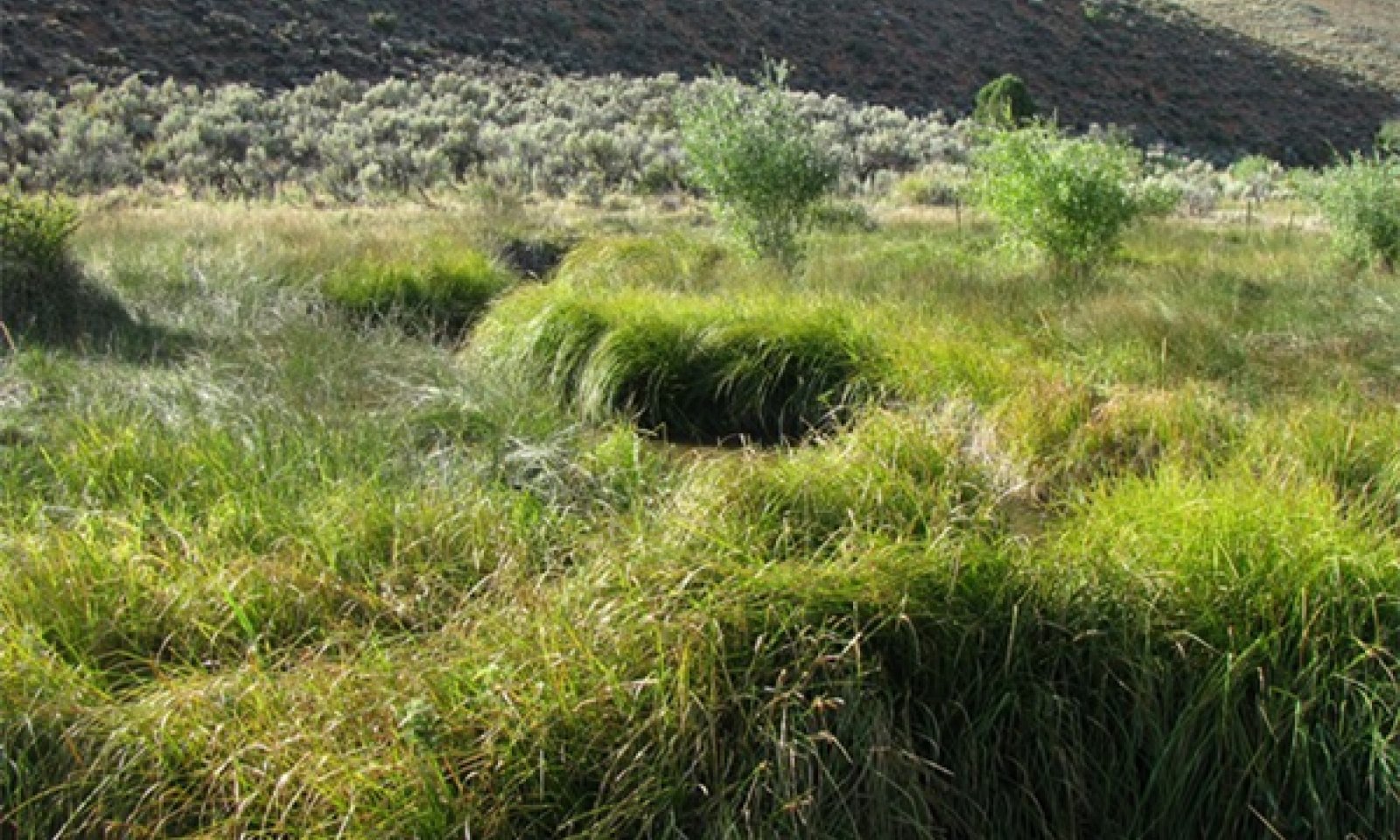

Natural Resources
Conservation Service
Ecological site R034AA010UT
Riparian Complex Perennial Gravelly VIII/E4 (Geyers Willow/Northwest Territory Sedge)
Last updated: 4/10/2025
Accessed: 12/19/2025
General information
Provisional. A provisional ecological site description has undergone quality control and quality assurance review. It contains a working state and transition model and enough information to identify the ecological site.
Classification relationships
Padgett, W.G., A.P. Youngblood, and A.H. Winward. Riparian community type classification of Utah and southeastern Idaho. US Dept. of Agriculture, Forest Service, Intermountain Region, 1989.
Youngblood, A.P., W.G. Padgett, and A.H. Winward. Riparian community type classification of eastern Idaho-western Wyoming. US Dept. of Agriculture, Forest Service, Intermountain Region, 1985.
Ecological site concept
This site is located in MLRA 34A, but may also occur in the lower elevations of MLRA 47A. It occurs in a broad alluvial valley bottom. The stream within this site has a low water surface slope and high sinuosity. This site typically has 3 plant community components, graminoids/willow; graminoids/forb; and graminoids/willow. The three plant communities occur on three different fluvial surfaces; point bars, flood plains, and flood-plain steps. Beavers can be present in this site and have influence on the vegetation structure, hydrology, and channel form.
Similar sites
| R034AA011UT |
Riparian Complex Perennial Gravelly VIII/E4 (Northwest Territory Sedge) This site also occurs in an alluvial valley, but the valley is narrower and there are smaller plant community components and fewer willows. |
|---|
Table 1. Dominant plant species
| Tree |
Not specified |
|---|---|
| Shrub |
(1) Salix geyeriana |
| Herbaceous |
(1) Carex utriculata |
Physiographic features
This ecological site occurs in MRLA 34A and may also be found in the lower elevations of 47A where it borders 34A. This site is in the Bear River Basin in the Middle Rocky Mountain Province of the Rocky Mountain System. It typically occurs between 6500 and 6800 feet with valley slopes less than 2%. The water table can be found at the surface to over 60 inches below the surface depending on the distance from the stream channel and fluvial surface. The tables below represent the range in variability between all three fluvial surfaces present within this site: point bars/streambank, flood plain and flood-plain step.
Table 2. Representative physiographic features
| Landforms |
(1)
Point bar
(2) Flood plain (3) Flood-plain step |
|---|---|
| Flooding duration | Brief (2 to 7 days) to long (7 to 30 days) |
| Flooding frequency | Frequent to rare |
| Elevation | 6,500 – 6,800 ft |
| Slope | 1% |
| Water table depth | 50 in |
| Aspect | Aspect is not a significant factor |
Climatic features
The average annual precipitation is 10 to 15 inches. Peak precipitation occurs as snow from October through April. This site has cold winters and short summers. Occasional convective thunderstorms produce small amounts of rain from June through September. The average annual temperature is 25 to 55 degrees F. The freeze-free period ranges from 95 to 115 days.
Table 3. Representative climatic features
| Frost-free period (average) | 82 days |
|---|---|
| Freeze-free period (average) | 115 days |
| Precipitation total (average) | 14 in |
Figure 1. Monthly precipitation range
Figure 2. Monthly average minimum and maximum temperature
Influencing water features
The stream channel in reference condition is an E4 Rosgen stream type. The stream is typically narrow and deep with undercut banks and overhanging vegetation. This channel has a very low width/depth ratio and high sinuosity. The water surface slope is less than two percent. The water velocity in this channel is in balance with the sediment transport capability. Beaver in this site can slow water velocity, pond water behind dams and create multiple channels.
Rosgen Valley Type: VIII- Alluvial valley is typically wide with low valley slopes with well-developed flood plain features.
Reference Stream Type: E4- This channel has high sinuosity, low channel slope and low channel width/depth ratios. Under influence from beaver, the channel could shift to a ponded site directly above the beaver dam.
Channel Material: Gravel dominated bed with some cobble in riffles and sand in pools and on stream banks
Delineative Criteria (Low; High):
Entrenchment Ratio (floodprone width/bankfull width): 2.2; 100
Width/Depth Ratio (bankfull width/bankfull depth at riffle): 2.0;10
Sinuosity (stream length/valley length): 1.3; 2.6
Slope Range: 0.004; 0.02
Channel Materials D50 (particle size index, mm): 8; 12
Channel Materials D84 (particle size index, mm): 32; 48
Soil features
Soils are typically variable in stream valley bottoms because of the stream sediment deposition on flood plains and throughout the valley bottom as the channel naturally migrates. Soils on this site range from sandy to loamy on the surface. Point bars are typically sandy to very gravelly sand, flood plains and flood-plain steps are typically loamy. Sand and gravel lenses throughout the profile are common on all fluvial surfaces. Buried A horizons are also typically on fluvial influenced soils. The typical fluvial surfaces found on this site are point bars, flood plains and flood-plain steps. The tables below represent the variability between all fluvial surfaces

Figure 3. Point bar/streambank soil core
Table 4. Representative soil features
| Surface texture |
(1) Loamy sand (2) Very gravelly sand (3) Loam |
|---|---|
| Drainage class | Poorly drained to well drained |
| Soil depth | 60 in |
| Surface fragment cover <=3" | Not specified |
| Surface fragment cover >3" | Not specified |
| Subsurface fragment volume <=3" (Depth not specified) |
60% |
| Subsurface fragment volume >3" (Depth not specified) |
Not specified |
Ecological dynamics
The stream channel on this site is sinuous, has a very low width to depth ratio, is slightly entrenched, and the dominant substrate size is gravel (E4 Rosgen channel). The valley bottom is moderately wide for the area. This site typically occurs further downstream in the watershed. The stream channel in this site appears to move from a low width to depth ratio stream channel (“E”) under reference conditions to a “C” channel under the impacts of continuous season-long livestock grazing. Grazing impacts vegetation throughout the riparian area, although some vegetation is more sensitive to grazing impacts, such as Northwest Territory sedge. Grazing can also shift the vegetation composition or create open space for different plants to establish, such as Kentucky bluegrass or reed canary grass. Kentucky blue grass does not have the same root characteristics as Nebraska sedge or Northwest Territory sedge. Riparian meadow communities dominated by sedges and rushes have a much greater root densities than grasses (Manning et al. 1989). So when these communities are degraded and loses the sedges and Kentucky bluegrass moves in, it decreases the stream bank stability. As stream bank stability decreases, fine sediment on the stream bank is eroded, thus creating different channel morphology.
This ecological site has been found in one location in Rich County Utah. It is found in a valley bottom with a perennial stream channel with a slope less than 2%. The channel in the valley bottom is highly sinuous and can be ponded through beaver activity. High water typically occurs in May with a mean annual flow recorded of 16 cubic feet per second. The channel is typically a Rosgen “E” channel when not under the influence of beaver and upstream of beaver dams, the channel can take on “DA” morphology (Rosgen 1996). Vegetation in a low width to depth ratio channel is essential in holding the stream banks together. Typical stream bank vegetation on this site is Nebraska sedge (Carex nebrascensis) and Northwest Territory sedge (Carex utriculata). These herbaceous roots growing on the stream banks in this site have an important effect in reducing erosion rates of channel banks (Smith 1976), developing new stream banks, and in providing stability to mature stream banks (Kleinfelder et al. 1992). The root structure of these rhizomatous sedges makes them particularly effective at bank stabilization in fine sediment soils (Steed & DeWald 2003) by binding the soil and adding extra cohesion to the stream bank (Thorne 1990).
Plant communities on this site are arranged according to proximity to channel and depth to water. Willows, sedges and rushes are typically found adjacent to the channel (plant community component 1). They have characteristics that allow them to tolerate long periods of inundation and flooding. Graminoids, including grasses, sedges and rushes, can be found growing on the flood plain (plant community component 2) and willows and graminoids can be found on the flood-plain step (plant community component 3). This arrangement is typical without the presence of beaver. The vegetation composition and arrangement on the valley bottom will change with beaver influence. Beaver dams can temporarily change a lotic to a lentic environment (Cooper et al. 2006). Dam building and foraging activities of beaver can alter the riparian ecosystem by ponding and diverting water and selectively foraging on certain trees or shrubs (Rosell et al. 2005; Gurnell 1998). Ponding and diverting water can then affect stream bank hydrology, impact of flood events, local velocity above and below a dam, and scour and deposition sediment patterns (Gurnell 1998). The stream channel above a beaver dam can take on a stable multithread channel (Rosgen “DA”) (Gurnell 1998). Beaver dams will also change vegetation by creating wetter habitat above a dam, increasing the area that can be colonized by obligate wetland species. Vegetation dynamics are also altered from the foraging preferences of beaver (Rosell et al. 2005). They preferentially use willow and aspen if available (Rosell et al. 2005). This foraging behavior can create a patchy landscape and may eventually lead to food source scarcity, forcing the beaver to leave the area, temporarily. Site abandonment by beavers can cause failure of beaver dams, allowing the impounded water to be released and fine sediment to be carried downstream. Bare sediment left behind the beaver dam can then be colonized by willows that would have been unlikely to establish with the presence of an active beaver dam because of the saturated/anaerobic soil (Cooper et al. 2006). This site will have more wetland obligate species present upstream of a beaver dam and there will be more open water than downstream of a dam. Plant community component 1 represents the wettest habitat and this suite of species is generally found in more abundance with the influence of beaver.
State and transition model

Figure 4. State and Transition Model for R034AA010UT
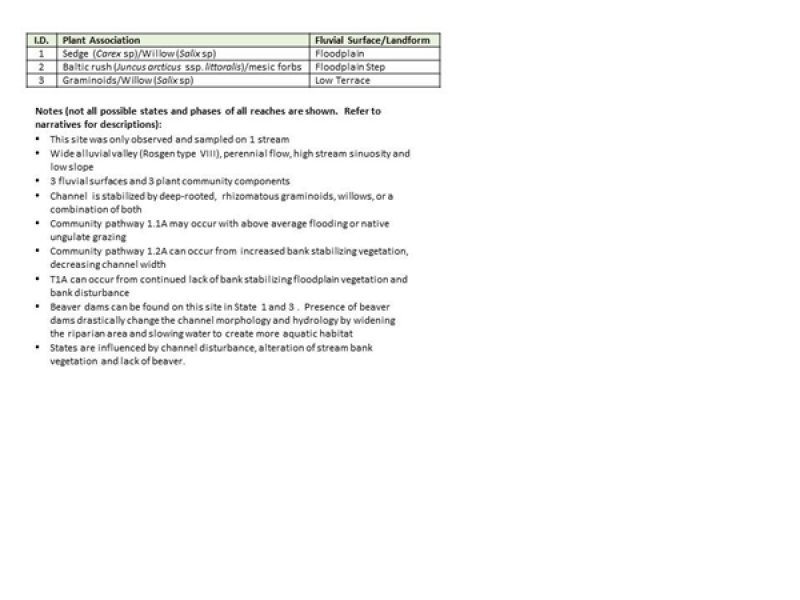
Figure 5. R034AY010 STM Legend
More interactive model formats are also available.
View Interactive Models
More interactive model formats are also available.
View Interactive Models
Click on state and transition labels to scroll to the respective text
Ecosystem states
State 1 submodel, plant communities
State 2 submodel, plant communities
State 3 submodel, plant communities
State 1
Reference
This state is represented by a beaver influenced riparian area or an E4 channel. Beaver influence may be patchy and not affect the entire site at one time. Beaver dams on this site will create ponds and slow water movement and will shift the plant composition to more obligate wetland species. The stream immediately above or below an abandoned beaver dam may have more “C4” channel geometry temporarily as the sediment deposited upstream of the dam is exposed and re-worked downstream. This exposed sediment is then available for plant colonization.
Community 1.1
E4 Channel

Figure 6. Site overview
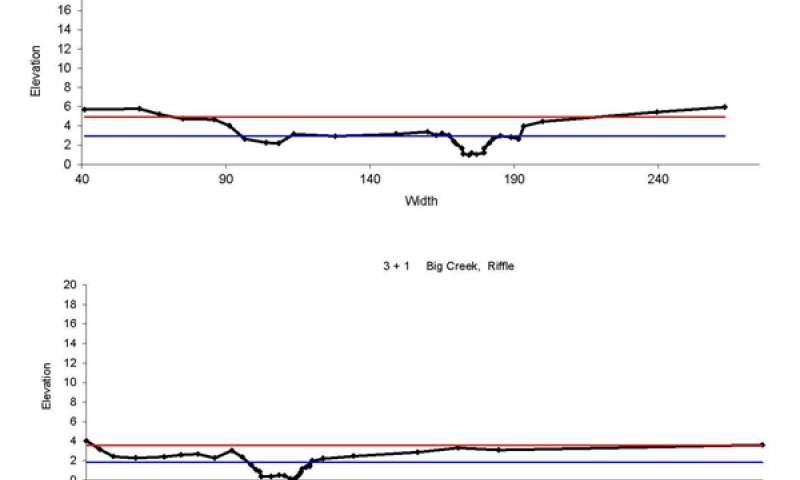
Figure 7. Representative stream cross sections.
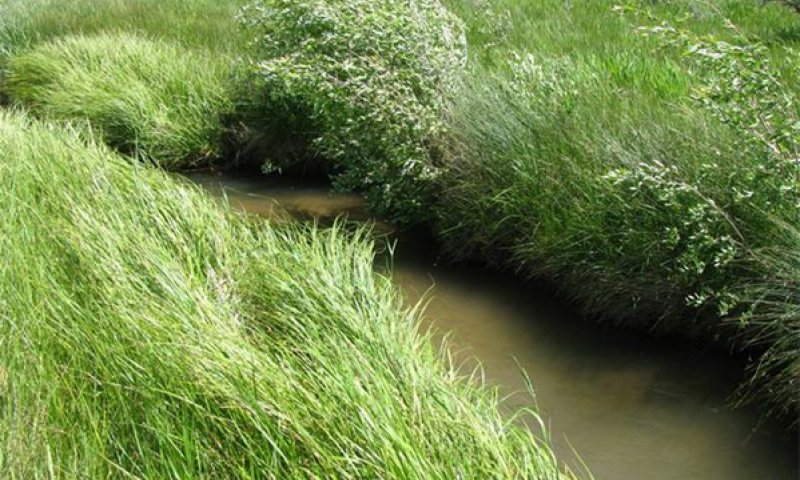
Figure 8. PCC1 with graminoids and shrubs
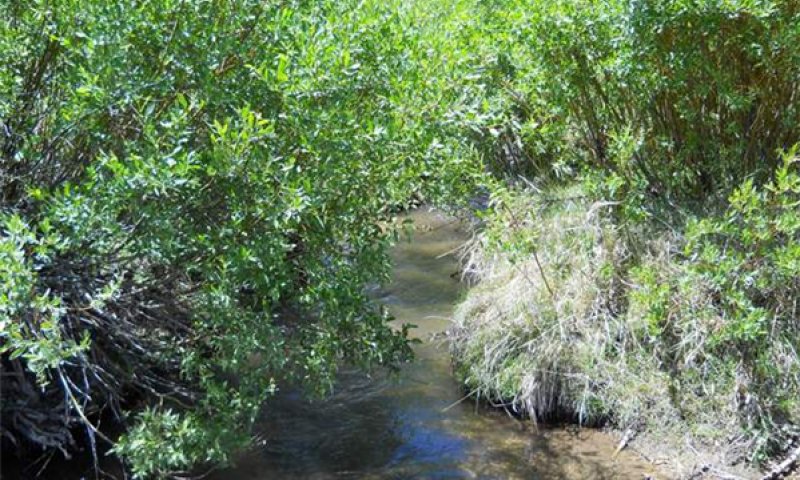
Figure 9. Shrub dominated banks
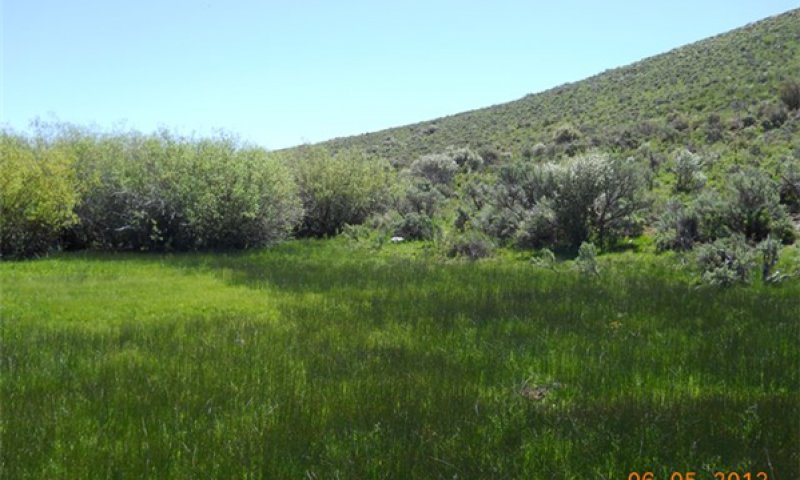
Figure 10. Edge of the flood plain

Figure 11. Plant community component 3
This phase has a narrow and deep meandering channel with well-developed vegetation on the streambanks, predominantly composed of sedges and willows. The flood plain receives regular flooding from snowmelt in the spring. All plant community components may be present in this phase. Plant Community Component Descriptions: Plant community components are related to proximity to the stream channel and depth to water table and beaver activity. The plant communities will shift spatially depending on channel position and beaver activity, where there will be more of the streambank/flood plain community (PCC1) under the influence of beaver and PCC3 may not be present where beaver dams impound the stream channel. Northwest Territory sedge is found closest to the stream channel or in low swales in the floodplain where the water table is high. Northwest Territory sedge and Nebraska sedge are able to tolerate inundation for extended periods of time, which is why they are found in areas with high water table. Their root structure also allows them to withstand flood events. The rhizomatous nature of these sedges allow them to dominate areas where they are found, leading to low diversity (Hoag & Zierke 1998). Willows can come into this community under the correct conditions. Willows require fresh wet sediment for germination and this occurs at the site after high flow deposits sediment on the floodplain. Willow typically occurs on this site further away from the channel, but still within the streambank/floodplain community. Booth’s willow is not tolerant of shading and can germinate after flooding if sediment deposition occurs (Esser 1992). This plant community has been associated with beaver complexes and also has been found to establish on old beaver dams where bare sediment is exposed. Booth’s willow is typically found on moist coarse soil but it cannot tolerate inundation for extended periods of time (Esser 1992). A typical trend found on former beaver influenced channels is to go from open water to Northwest Territory sedge, then to Booth’s willow (Esser 1992). Plant community component 2 is drier than plant community component 1 and is further from the stream and has a deeper water table. The community is composed of various graminoids and forbs, particularly Baltic rush and in one location tufted hair grass. Plant community component 3 is dominated by graminoids and willow. Geyer’s willow is the dominant shrub in this community and it is typically found in clumps with other shrubs found around the base. Geyer’s willow is also associated with beaver activity. This willow can develop in abandoned and sediment filled beaver ponds, so it is often found further away from the channel.
Figure 12. Annual production by plant type (representative values) or group (midpoint values)
Table 5. Annual production by plant type
| Plant type | Low (lb/acre) |
Representative value (lb/acre) |
High (lb/acre) |
|---|---|---|---|
| Grass/Grasslike | 500 | 1500 | 2000 |
| Shrub/Vine | 25 | 200 | 450 |
| Forb | 0 | 50 | 150 |
| Total | 525 | 1750 | 2600 |
Table 6. Soil surface cover
| Tree basal cover | 0% |
|---|---|
| Shrub/vine/liana basal cover | 0% |
| Grass/grasslike basal cover | 0% |
| Forb basal cover | 0% |
| Non-vascular plants | 0% |
| Biological crusts | 0% |
| Litter | 50-90% |
| Surface fragments >0.25" and <=3" | 0% |
| Surface fragments >3" | 0% |
| Bedrock | 0% |
| Water | 0% |
| Bare ground | 50-100% |
Table 7. Woody ground cover
| Downed wood, fine-small (<0.40" diameter; 1-hour fuels) | 0-2% N* |
|---|---|
| Downed wood, fine-medium (0.40-0.99" diameter; 10-hour fuels) | 0-2% N* |
| Downed wood, fine-large (1.00-2.99" diameter; 100-hour fuels) | 0% |
| Downed wood, coarse-small (3.00-8.99" diameter; 1,000-hour fuels) | 0% |
| Downed wood, coarse-large (>9.00" diameter; 10,000-hour fuels) | 0% |
| Tree snags** (hard***) | – |
| Tree snags** (soft***) | – |
| Tree snag count** (hard***) | 0 per acre |
| Tree snag count** (hard***) | 0 per acre |
* Decomposition Classes: N - no or little integration with the soil surface; I - partial to nearly full integration with the soil surface.
** >10.16cm diameter at 1.3716m above ground and >1.8288m height--if less diameter OR height use applicable down wood type; for pinyon and juniper, use 0.3048m above ground.
*** Hard - tree is dead with most or all of bark intact; Soft - most of bark has sloughed off.
Table 8. Canopy structure (% cover)
| Height Above Ground (ft) | Tree | Shrub/Vine | Grass/ Grasslike |
Forb |
|---|---|---|---|---|
| <0.5 | – | – | 0-5% | 0-10% |
| >0.5 <= 1 | – | 0-5% | 0-5% | 0-5% |
| >1 <= 2 | – | – | 0-50% | – |
| >2 <= 4.5 | – | – | – | – |
| >4.5 <= 13 | – | 0-35% | – | – |
| >13 <= 40 | – | – | – | – |
| >40 <= 80 | – | – | – | – |
| >80 <= 120 | – | – | – | – |
| >120 | – | – | – | – |
Community 1.2
C4 Channel
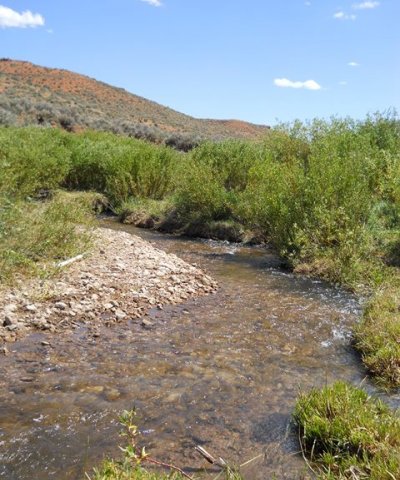
Figure 13. C4 Channel with shrubs in PCC1
This phase has a slightly wider channel and more deposition and erosion occurring around the meander bends. This phase may occur after large floods or may occur after beaver dam failure, which leaves sediment accumulated behind a dam exposed to be colonized by plants or eroded. All plant community components may be present in this phase.
Community 1.3
Beaver Influenced
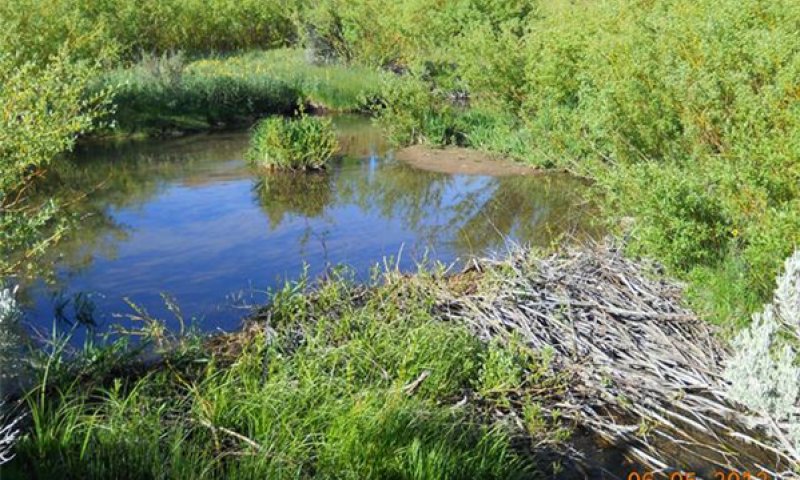
Figure 14. Stream channel impounded behind beaver dam
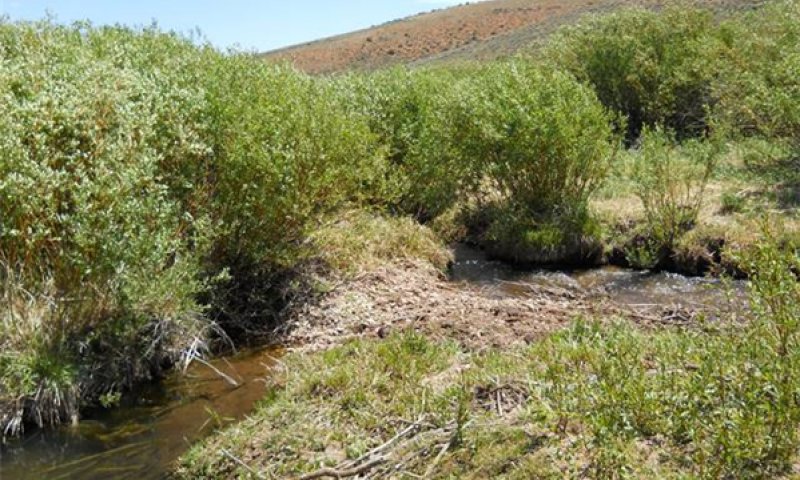
Figure 15. Small beaver dam
This phase is characterized by beaver activity that includes dams and foraging. Damming can create ponded water upstream and temporarily alter the hydrology of the system. This can create a wetter environment where more obligate wetland species may occur. Plant community components included in this phase are the sedge/willow and the graminoid/forb communities. Plant community component 3, graminoid/willow, may be present in this site, but often with beaver dams, the higher water table creates an environment that is not as suitable for willows.
Pathway 1.1A
Community 1.1 to 1.2


Flooding results in sediment deposition and erosion and scouring of vegetation on stream banks around meanders or removal of vegetation from native ungulate grazing
Pathway 1.1B
Community 1.1 to 1.3


Beaver activity, beaver dam
Pathway 1.2A
Community 1.2 to 1.1


Vegetation re-establishment
Pathway 1.2B
Community 1.2 to 1.3


Beaver activity, beaver dam
State 2
Entrenched Degraded
This state is characterized by a shift in the composition of plant community components due to season long grazing pressure. The sedges and willow typically found on the streambanks are particularly palatable to livestock and can be grazed at a level that weakens the plant eventually leading to loss from the site (i.e. Northwest Territory sedge). Kentucky bluegrass often replaces these sedges along the streambank (see Ecological Dynamics section).
Community 2.1
C4 Channel

Figure 16. Grazed C4 channel with little willows or sedges re
This phase has a shift in vegetation composition in all plant community components. Northwest territory sedge is often missing from PCC1 and is replaced by other graminoids that may not have the same root structure and bank holding capability of sedges.
Community 2.2
F4 Channel
This phase results from excessive lateral erosion creating a wide, shallow stream with unstable streambanks. PCC 1 is largely lost in this phase.
Pathway 2.1A
Community 2.1 to 2.2
Vegetation loss and change from grazing leads to bank failure and erosion
Pathway 2.2A
Community 2.2 to 2.1
Vegetation development on streambanks, grazing pressure released
State 3
Re-established Flood Plain
This state is characterized by riparian areas that have down cut and reestablished floodplains at a lower elevation. The riparian area is narrower than reference condition, but otherwise functions similarly. Beaver may affect this state, if the proper food source is available.
Community 3.1
C4 Channel
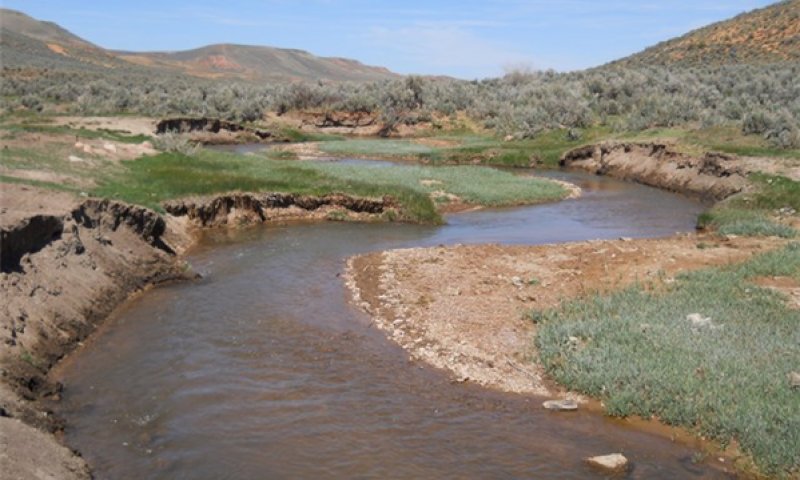
Figure 17. Downcut C4 channel with deposition on pointbars th
This phase is similar to 1.2.
Community 3.2
E4 Channel
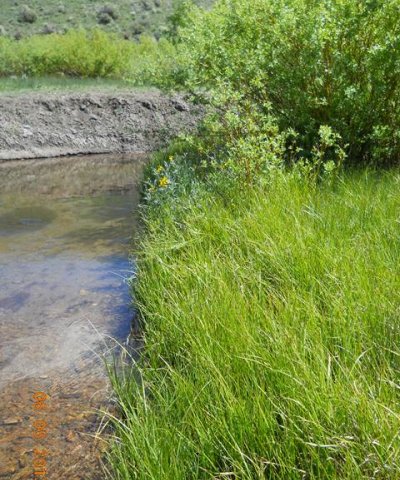
Figure 18. PCC1 established after downcutting.
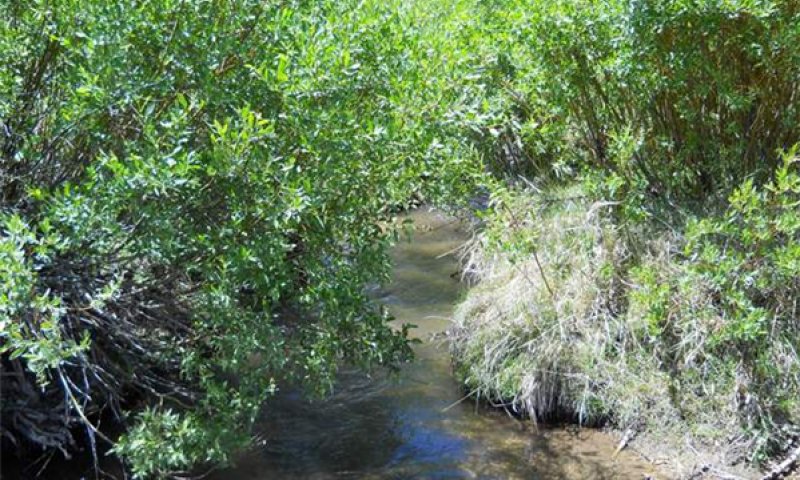
Figure 19. Shrubs dominating PCC1
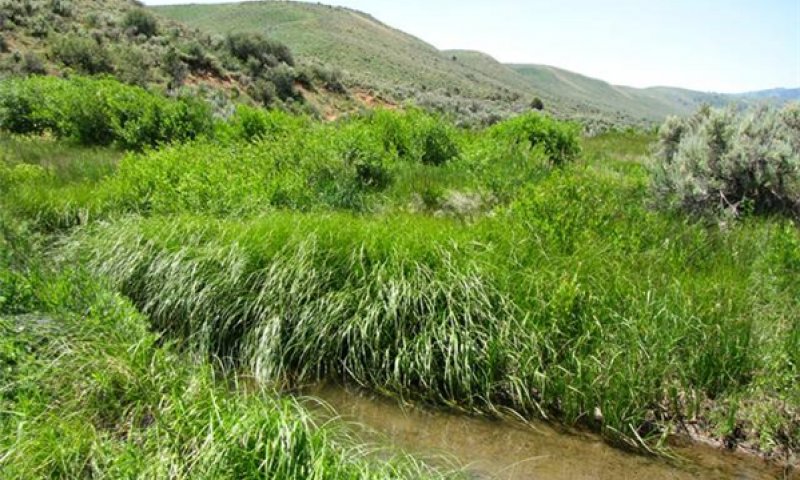
Figure 20. PCC1 dominated by sedges
This phase is similar to 1.1
Pathway 3.1A
Community 3.1 to 3.2


Vegetation re-establishment
Pathway 3.2A
Community 3.2 to 3.1


Flooding results in sediment deposition and erosion and scouring of vegetation on stream banks around meanders or removal of vegetation from native ungulate grazing
Transition T1A
State 1 to 2
Removal of bank stabilizing vegetation creating unstable banks that are eroded Plant communities with higher groundwater can be colonized by reed canary grass and all communities can be colonized by Kentucky bluegrass and thistles.
Transition T2A
State 2 to 3
Creation of a new floodplain/bankfull bench and re-colonization of bank stabilizing vegetation
Additional community tables
Table 9. Community 1.1 plant community composition
| Group | Common name | Symbol | Scientific name | Annual production (lb/acre) | Foliar cover (%) | |
|---|---|---|---|---|---|---|
|
Shrub/Vine
|
||||||
| 1 | PCC1 Shrubs | 0–50 | ||||
| Booth's willow | SABO2 | Salix boothii | 0–50 | 0–20 | ||
| Shrub, broadleaf | 2SB | Shrub, broadleaf | 0–10 | 0–5 | ||
| 3 | PCC3 Shrubs | 150–450 | ||||
| Booth's willow | SABO2 | Salix boothii | 50–300 | 1–30 | ||
| Geyer willow | SAGE2 | Salix geyeriana | 100–300 | 15–25 | ||
| Shrub, deciduous | 2SD | Shrub, deciduous | 0–100 | 0–15 | ||
| currant | RIBES | Ribes | 0–50 | 0–5 | ||
| Woods' rose | ROWO | Rosa woodsii | 0–50 | 0–5 | ||
|
Grass/Grasslike
|
||||||
| 1 | PCC1 Graminoids | 500–2000 | ||||
| Northwest Territory sedge | CAUT | Carex utriculata | 5–1500 | 1–50 | ||
| mountain rush | JUARL | Juncus arcticus ssp. littoralis | 100–500 | 5–20 | ||
| Nebraska sedge | CANE2 | Carex nebrascensis | 0–200 | 0–10 | ||
| Grass-like, perennial | 2GLP | Grass-like, perennial | 0–50 | 0–10 | ||
| Grass, annual | 2GA | Grass, annual | 0–25 | 0–5 | ||
| Grass, perennial | 2GP | Grass, perennial | 0–20 | 0–5 | ||
| water whorlgrass | CAAQ3 | Catabrosa aquatica | 0–15 | 0–2 | ||
| 2 | PCC2 Graminoids | 500–2000 | ||||
| mountain rush | JUARL | Juncus arcticus ssp. littoralis | 250–1100 | 5–25 | ||
| woolly sedge | CAPE42 | Carex pellita | 0–500 | 0–15 | ||
| clustered field sedge | CAPR5 | Carex praegracilis | 0–250 | 0–20 | ||
| Nebraska sedge | CANE2 | Carex nebrascensis | 0–150 | 0–15 | ||
| Grass-like, perennial | 2GLP | Grass-like, perennial | 0–50 | 0–15 | ||
| meadow barley | HOBR2 | Hordeum brachyantherum | 0–50 | 0–10 | ||
| Grass, perennial | 2GP | Grass, perennial | 0–50 | 0–5 | ||
| Grass, annual | 2GA | Grass, annual | 0–50 | 0–5 | ||
| 3 | PCC3 Graminoids | 1000–2000 | ||||
| mountain rush | JUARL | Juncus arcticus ssp. littoralis | 700–1500 | 10–25 | ||
| clustered field sedge | CAPR5 | Carex praegracilis | 200–500 | 10–25 | ||
| Graminoid (grass or grass-like) | 2GRAM | Graminoid (grass or grass-like) | 100–300 | 5–15 | ||
|
Forb
|
||||||
| 1 | PCC1 Forbs | 0–150 | ||||
| starry false lily of the valley | MAST4 | Maianthemum stellatum | 0–50 | 0–10 | ||
| mountain goldenbanner | THMO6 | Thermopsis montana | 0–50 | 0–2 | ||
| willowherb | EPILO | Epilobium | 0–30 | 0–2 | ||
| Forb, annual | 2FA | Forb, annual | 0–15 | 0–5 | ||
| Forb, perennial | 2FP | Forb, perennial | 0–15 | 0–5 | ||
| field horsetail | EQAR | Equisetum arvense | 0–10 | 0–2 | ||
| wild mint | MEAR4 | Mentha arvensis | 0–10 | 0–2 | ||
| alkali buttercup | RACY | Ranunculus cymbalaria | 0–5 | 0–5 | ||
| speedwell | VERON | Veronica | 0–5 | 0–2 | ||
| 2 | PCC2 Forbs | 50–150 | ||||
| starry false lily of the valley | MAST4 | Maianthemum stellatum | 0–50 | 0–5 | ||
| mountain goldenbanner | THMO6 | Thermopsis montana | 0–50 | 0–5 | ||
| Forb, annual | 2FA | Forb, annual | 0–25 | 0–5 | ||
| Forb, perennial | 2FP | Forb, perennial | 0–25 | 0–5 | ||
| common yarrow | ACMI2 | Achillea millefolium | 0–25 | 0–5 | ||
| thistle | CIRSI | Cirsium | 0–10 | 0–2 | ||
| 3 | PCC3 | 50–350 | ||||
| starry false lily of the valley | MAST4 | Maianthemum stellatum | 50–150 | 2–5 | ||
| mountain goldenbanner | THMO6 | Thermopsis montana | 50–150 | 2–5 | ||
| Forb, annual | 2FA | Forb, annual | 0–50 | 0–5 | ||
| Forb, perennial | 2FP | Forb, perennial | 0–25 | 0–5 | ||
| common yarrow | ACMI2 | Achillea millefolium | 0–25 | 0–5 | ||
| milkvetch | ASTRA | Astragalus | 0–15 | 0–5 | ||
| largeleaf avens | GEMA4 | Geum macrophyllum | 0–15 | 0–1 | ||
Interpretations
Animal community
There are three dominant species of game fish, rainbow trout, Yellowstone cutthroat trout and eastern brook char. There are two non-game species sculpin and sucker (Platts and Nelson 1989).
Other information
Observed influence of poor grazing management (continuous season-long grazing)on this site has been attributed to wider shallower and finer sediment stream channel (Platts & Nelson 1989). Grazing was also observed to change the plant community and decrease canopy cover (Platts & Nelson 1989). Northwest Territory sedge was not found in areas that were grazed, while it was found in areas that had not been grazed. Nebraska sedge was found in grazed and ungrazed areas. Shrubs were also only found in areas that were not grazed. Kentucky bluegrass dominated the stream bank plant community under grazing pressure, while Northwest Territory sedge and Nebraska sedge dominated ungrazed areas (Platts & Nelson 1989). This shift in plant communities has an effect on stream bank stability. Riparian meadow communities dominated by sedges and rushes have a much greater root densities than grasses (Manning et al. 1989). When these communities are degraded and lose the sedges and Kentucky bluegrass etablished, it decreases the stream bank stability (Manning et al. 1989).
Supporting information
Type locality
| Location 1: Rich County, UT | |
|---|---|
| General legal description | The type location is located up Big Creek Road and is within the upper most exclosure. |
Other references
Cooper, D.J., J. Dickens, N.T. Hobbs, L. Christensen, and L. Landrum. 2006. Hydrologic, geomorphic and climatic processes controlling willow establishment in montane ecosystem. Hydrologic Processes 20: 1845-1864.
Esser, Lora L. 1992. Salix boothii. In: Fire Effects Information System, [Online]. U.S. Department of Agriculture, Forest Service, Rocky Mountain Research Station, Fire Sciences Laboratory (Producer). Available: http://www.fs.fed.us/database/feis/ [2013, October 23].
Gurnell, A.M. 1998. The hydrogeomorphological effects of beaver dam-building activity. Progress in Physical Geography 22(2): 167-189.
Hoag, J.C. and M. Zierke. 1998. A reference guide for the collections and use of ten common wetland plants of the Great Basin and Intermountain West. Aberdeen (ID): USDA NRCS, Plant Materials Center. Riparian/Wetland Project Information Series #13. 13 p.
Kleinfelder, D., S. Swanson, G. Norris, and W. Clary. 1992. Unconfined compressive strength of some streambank soils with herbaceous roots. Soil Sci. Am. J. 56: 1920-1925.
Manning, M.E., S.R. Swanson, T, Svejcar, and J. Trent. 1989. Rooting characteristics of four intermountain meadow community types. Journal of Range Management 42(4): 309-312.
Platts, W. S.; Nelson, R. L. 1989. Characteristics of riparian plant communities with respect to livestock grazing in northeastern Utah. In: Riparian resource management: an educational workshop; 1989 May 8-11; Billings, MT: 73-81.
Rosell, F., O. Bozser, P. Collen, and H. Parker. 2005. Ecological impact of beavers Castor fiber and Castor canadensis and their ability to modify ecosystems. Mammal Review 35(3&4): 248-276.
Rosgen, D.L., 1996. Applied River Morphology. Wildland Hydrology Books, Pagosa Springs, Colorado, and Ft. Collins, CO.
Smith, D.G. 1976. Effect of vegetation on lateral migration of anastomosed channels of a glacier meltwater river. Geological Society of American Bulletin 87: 857-860.
Steed, J.E. and L.E. DeWald. 2003. Transplanting sedges (Carex spp.) in southwestern riparian meadows. Restoration Ecology 11(2): 247-256.
Thorne, C.R. 1990. Effects of vegetation on riverbank erosion and stability. In: Thornes, J.B. (ed.). Vegetation and Erosion. John Wiley and Sons Ltd. pp 125-144.
USDA, NRCS. 2008. (Electronic) Field Office Technical Guide. Available online at: http://efotg.nrcs.usda.gov/efotg_locator.aspx.
USDA, Natural Resource Conservation Service. 2004. National Forestry Handbook. Available online at: http://soils.usda.gov/technical/nfhandbook/.
USDA, NRCS. 2007. The PLANTS Database. National Plant Data Center, Baton Rouge, LA 70874-4490 USA. Available online at: http://plants.usda.gov.
USDA, NRCS. 2003. National Range and Pasture Handbook. Available online at: http://www.glti.nrcs.usda.gov/technical/publications/nrph.html.
USDA, NRCS Soil Survey Manuals for appropriate counties within MLRA 34A.
USDA, NRCS, 2007. Southerland, W. B., Technical Supplement 3E, National Engineering Handbook 654, Rosgen Stream Classification Technique – Supplemental Materials.
USDA, USFS, 2010. Fire Effects Information System Database. Available online at: http://www.fs.fed.us/database/feis/.
USDI, USGS, 2010. National Water Information System. Available online at: http://waterdata.usgs.gov/nwis/.
Contributors
Sarah Quistberg
Approval
Kirt Walstad, 4/10/2025
Rangeland health reference sheet
Interpreting Indicators of Rangeland Health is a qualitative assessment protocol used to determine ecosystem condition based on benchmark characteristics described in the Reference Sheet. A suite of 17 (or more) indicators are typically considered in an assessment. The ecological site(s) representative of an assessment location must be known prior to applying the protocol and must be verified based on soils and climate. Current plant community cannot be used to identify the ecological site.
| Author(s)/participant(s) | |
|---|---|
| Contact for lead author | |
| Date | 04/10/2025 |
| Approved by | Kirt Walstad |
| Approval date | |
| Composition (Indicators 10 and 12) based on | Annual Production |
Indicators
-
Number and extent of rills:
-
Presence of water flow patterns:
-
Number and height of erosional pedestals or terracettes:
-
Bare ground from Ecological Site Description or other studies (rock, litter, lichen, moss, plant canopy are not bare ground):
-
Number of gullies and erosion associated with gullies:
-
Extent of wind scoured, blowouts and/or depositional areas:
-
Amount of litter movement (describe size and distance expected to travel):
-
Soil surface (top few mm) resistance to erosion (stability values are averages - most sites will show a range of values):
-
Soil surface structure and SOM content (include type of structure and A-horizon color and thickness):
-
Effect of community phase composition (relative proportion of different functional groups) and spatial distribution on infiltration and runoff:
-
Presence and thickness of compaction layer (usually none; describe soil profile features which may be mistaken for compaction on this site):
-
Functional/Structural Groups (list in order of descending dominance by above-ground annual-production or live foliar cover using symbols: >>, >, = to indicate much greater than, greater than, and equal to):
Dominant:
Sub-dominant:
Other:
Additional:
-
Amount of plant mortality and decadence (include which functional groups are expected to show mortality or decadence):
-
Average percent litter cover (%) and depth ( in):
-
Expected annual annual-production (this is TOTAL above-ground annual-production, not just forage annual-production):
-
Potential invasive (including noxious) species (native and non-native). List species which BOTH characterize degraded states and have the potential to become a dominant or co-dominant species on the ecological site if their future establishment and growth is not actively controlled by management interventions. Species that become dominant for only one to several years (e.g., short-term response to drought or wildfire) are not invasive plants. Note that unlike other indicators, we are describing what is NOT expected in the reference state for the ecological site:
-
Perennial plant reproductive capability:
Print Options
Sections
Font
Other
The Ecosystem Dynamics Interpretive Tool is an information system framework developed by the USDA-ARS Jornada Experimental Range, USDA Natural Resources Conservation Service, and New Mexico State University.
Click on box and path labels to scroll to the respective text.